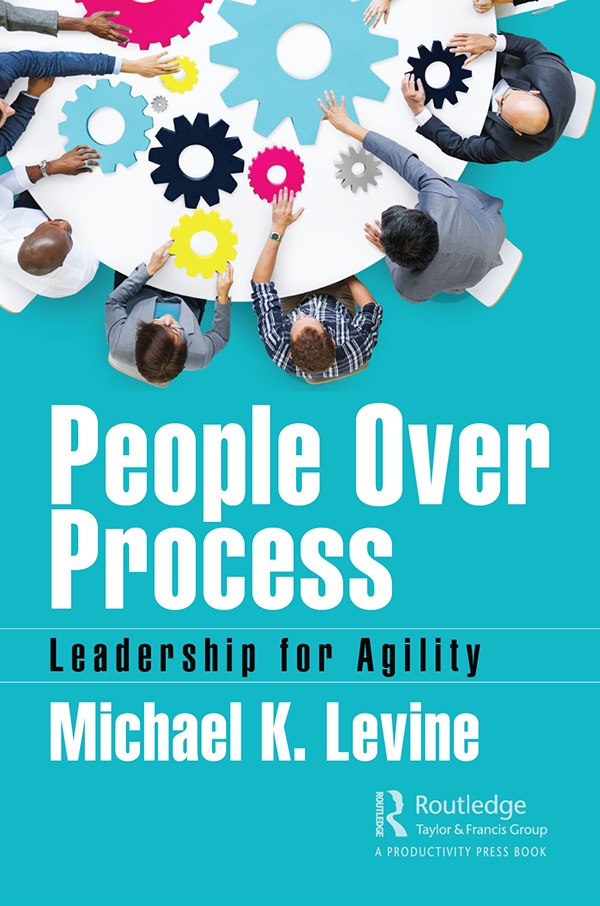
Creative teamwork can be highly rewarding and fun or can be painful and disappointing. I’ve spent my career building and implementing complex software systems in large complicated organizations. This kind of endeavor involves taking hundreds or thousands of ideas and turning them into concrete computer code which must run reliably and execute business processes that are legal, compliant, efficient, accurate, and understood. Designing a new car seems to be a similar kind of creative process, and I would guess there are many other examples in today’s complicated rapidly-changing world that share similar characteristics. Having great frameworks on which team members can rely is critical to success in this kind of environment.
Creative teams require leadership that simultaneously delivers rigorous fact-based decision-making, input from all who have something to share followed by alignment on the chosen paths, and efficiency so we are not wasting the time of team members and losing attention. This is leadership for agility. Frameworks are a key mechanism by which we operationalize our leadership.
Adopt Frameworks
It’s a big world and few of us have types of problems that have not been addressed before. Smart people have preceded us and the first source of useful frameworks is to borrow from them!
There are rich sources of frameworks from a variety of legacies. In the software world, agile and scrum have developed commonly used frameworks such as journey mapping, user stories, backlogs, and scrum board. These help with understanding customer needs and translating them into tasks and plans to build solutions. Engineering has given us the failure mode and effects analysis, which helps analyze what can go wrong, how we know it did, and what to do to fix it. Lean, the manufacturing culture that initially emerged from Toyota, gives the A3 problem-solving framework and the value-stream map useful for process design and streamlining. Film making gives us the rundown and call sheet, the detailed schedule for a film shooting session.
The beauty of adopting a framework, especially when they are native to the field in which you are working, is that some of your team members may already be familiar with its use. There may be relevant examples, tools, and training materials. It’s the easy way to get started or to adopt in order to help a struggling team.
Adapt Frameworks
The first agile value from the software Agile Manifesto is “People and Interactions Over Process and Tools.” A framework is valuable tool that supports rigor, alignment, and efficiency, but its only useful if it fits your team and the specific problems at hand. That takes leadership and adaptation.
The failure mode and effects analysis is a good example. The classic engineering examples you might find in text books or websites can be daunting. You might need something much simpler, or you might need to add some new columns to potential causes of failure. The A3 from lean is another example where adaptation can be powerful. One of my team mates adapted the A3 from problem solving to use a simple initiative initiation framework that we’ve used broadly for years.
A potential barrier to adaptation of frameworks is excessive enterprise standardization. Do we really need exactly the same status report across broad swaths of the company? Maybe, but realize that standardization inhibits improvement and local customization. I never want to see “this section intentionally left blank” in a status report again – just please don’t Include the section!
Create New Frameworks
The variety of creative team endeavors is broad, so the best frameworks for your work may not have been created yet. Great leaders, whether in formal organizational leadership roles or not, often innovate frameworks of value.
A favorite innovation is what my teams have called the process/technology simulation. It was created by a creative team member and enhanced and varied over time. The problem was to align a complex new business process to the new technology elements supporting it. Historically this might have been in separate steps, using a process flow or value stream for the operational flow and a technology architecture document with swim lanes or such for technology elements. The problem with these previous frameworks was that both frameworks were accessible only to specialists on each side (lack of alignment even within each function) and failure to design for interdependence of process and technology (lack of rigor). The innovative framework was a play-acting exercise with tech leaders physically becoming their systems, and operations folks simulating business scenario from beginning to end running their data and messages from system (person) to system (person). With a large audience totally engaged in the play, the team achieved rigor and alignment in an efficient (and fun) way.
Leadership for Agility
Great frameworks are manifestations of great leadership. We can draw on our heritage, the leaders in our fields who came before us. From there, we need to build leadership on our teams, focusing on rigor, alignment, and efficiency. We need to enable adaption and innovation, not crush it with standardization demands from broader enterprises, while carefully adopting standardized frameworks where needed.
Michael K. Levine is an expert on lean and agile software development and information technology He conducted international trade negotiation at the US Commerce Department, was a corporate banker for First Bank System, and became divisional CIO at Norwest Bank. After a stint at Wells Fargo he joined US Bank to deploy a new branch banking system (bringing lean and agile to a highly structured waterfall environment), then became technology lead for US Bank Home Mortgage. He now leads all consumer lending and business banking technology. His previous books are Tale of Two Systems: Lean and Agile Software Development for Business Leaders, and Tale of Two Transformations: Bringing Lean and Agile Software Development to Life. His third book is People Over Process: Leadership for Agility (Productivity Press, September 30, 2019). He lives in St. Paul, Minnesota with his wife, Holly Lindsay. Learn more at TheTalesofAgility.com